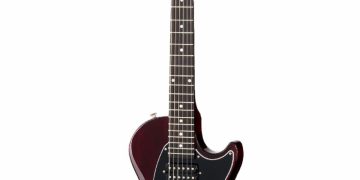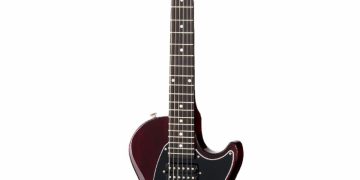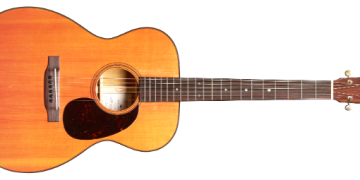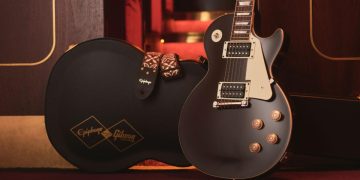 In an issue where we turn the spotlight towards stompbox effects pedals, it made sense to check in with one of the organizations synonymous with such product, DigiTech.
In an issue where we turn the spotlight towards stompbox effects pedals, it made sense to check in with one of the organizations synonymous with such product, DigiTech.
Recently appointed market manager Tom Cram sat down with MMR to give us the scoop on what’s new with the iconic brand, and discuss plans for the future…
 Most of our readers are at least somewhat familiar with DigiTech’s history, but can you briefly discuss the early years of the company and its evolution to the present day?
Most of our readers are at least somewhat familiar with DigiTech’s history, but can you briefly discuss the early years of the company and its evolution to the present day?
Tom Cram: DOD incorporated in 1973 and DigiTech started as the digital division of DOD Electronics in the late ‘80s. The early PDS Series of dual pedals, the IPS 33B, and the first RP1 MFX were a mixture of analog and digital circuits. There were some really interesting digitally controlled analog designs that DigiTech pioneered that some companies are just now starting to rediscover.
Of course the Whammy is the most iconic pedal to come out of that period. But the Vocalist and JamMan series of pedals have been just as influential. The first JamMan compact looper [JamMan was originally a Lexicon pedal – Ed.] invented an entirely new market of simplified song based loopers.
There is a lot of online commentary about Harman's "recent" purchase of DOD/DigiTech, but this talk ignores the fact the Harman actually bought DOD/DigiTech back in 1991! There have been a lot of shifts at DigiTech, the most dramatic has been recent. We moved out of the building that we had been in for 20-plus years to a much nicer facility and we have had a complete change of management.
This move and change of vision coincides with me becoming the DOD/DigiTech market manager. I've been working hard to take the company in a new direction and all of the new pedals we have introduced over the past year are direct evidence of that change.
Along those lines, can you talk more about the current setup over at DigiTech – the headquarters, the production facilities, how many employees, what’s the distribution model, et cetera?
Right now DigiTech production is split between our manufacturing facility in Elkhart, Indiana and our manufacturing facility in China. The general split is that first runs are done in the US and once the process is bulletproof, we move it over to China. There are variations on this process, but that is the general rule. Our current location is a beautiful building in South Jordan, Utah and we have a fully functioning recording studio and state of the art testing rooms. It is much, much, nicer than our old building. Currently we are distributed domestically by US Music Corp.
DigiTech took a big and groundbreaking dive into iOS-interactive devices with the iStomp a few years ago. What was the overall reaction to that product and do you see more of the same on the way, both from DigiTech and other suppliers?
The iPB-10 and the iStomp were both big experiments for DigiTech. We have a long history of trying new things and these two pedals are part of that history. Unfortunately, the reaction from the market was not as strong as we anticipated and we have shifted gears away from tying functionality to third-party products.
DigiTech is, of course, primarily known for effects and multi-effects pedals, but you also field some accessories and a couple of amps. What percentage of the brand’s overall business is accounted for by these “non-effect” products?
Practice Amps and accessories are a very small part of our business, they are mostly to helps us address specific regional sales and market needs.
The TRIO made a big splash at the recent NAMM Show. Can you talk about the catalyst behind the pedal’s design, describe the features and functionality, and perhaps touch upon early dealer and end-user response?
TRIO is an example of DigiTech experimenting again. Thanks to our Harman Canada team, we have cutting-edge pitch detection and beat detection technology that we implemented in the new Whammy, and there are many other musically interesting ways to implement this technology. TRIO is the culmination of many discussions about the next step in the constant dance of technology and music creation. Our goal was to make TRIO as seamless as possible, to emulate that inspiration of playing with a real band. TRIO will be shipping toward middle of March.
What are some other recent or upcoming product releases of note from DigiTech?
The return of DOD is pretty noteworthy, and part of that is the new DOD Boneshaker distortion. The Boneshaker is collaboration with Black Arts Toneworks, and it marks my new philosophy of trying new things and opening up possibilities that have previously been considered to be closed.
There have been occasional rumblings lately about personnel and perhaps even ownership shifts – do you care to comment?
We've had big personnel changes over the past few years, but those changes have all been positive in my opinion. It has enabled DigiTech to change dramatically in a short amount of time. There is a renewed sense of purpose and focus here that I haven't seen since the ‘90s. DOD/DigiTech feels like a nimble and ferocious little company again. I dig it.
What trends have you been noticing in the stompbox market?
The two main trends are quite contradictory in nature. I see a desire to have rack power in a stompbox format, but I also see a trend toward mini pedals. My focus has been to balance the features with size instead of compromising usability just to make something tiny.
There is a difference between smaller and tiny, one is a solution to a problem and the other is a solution in search of a problem.
Final thoughts, or expectations for the coming months?
We released more pedals last year than in any other year of our entire history, and this year will be more of the same. I'm moving fast and I have a ton of ideas that need to see the light of day. It is an exciting time to be DOD/DigiTech. Come along for the ride!

























